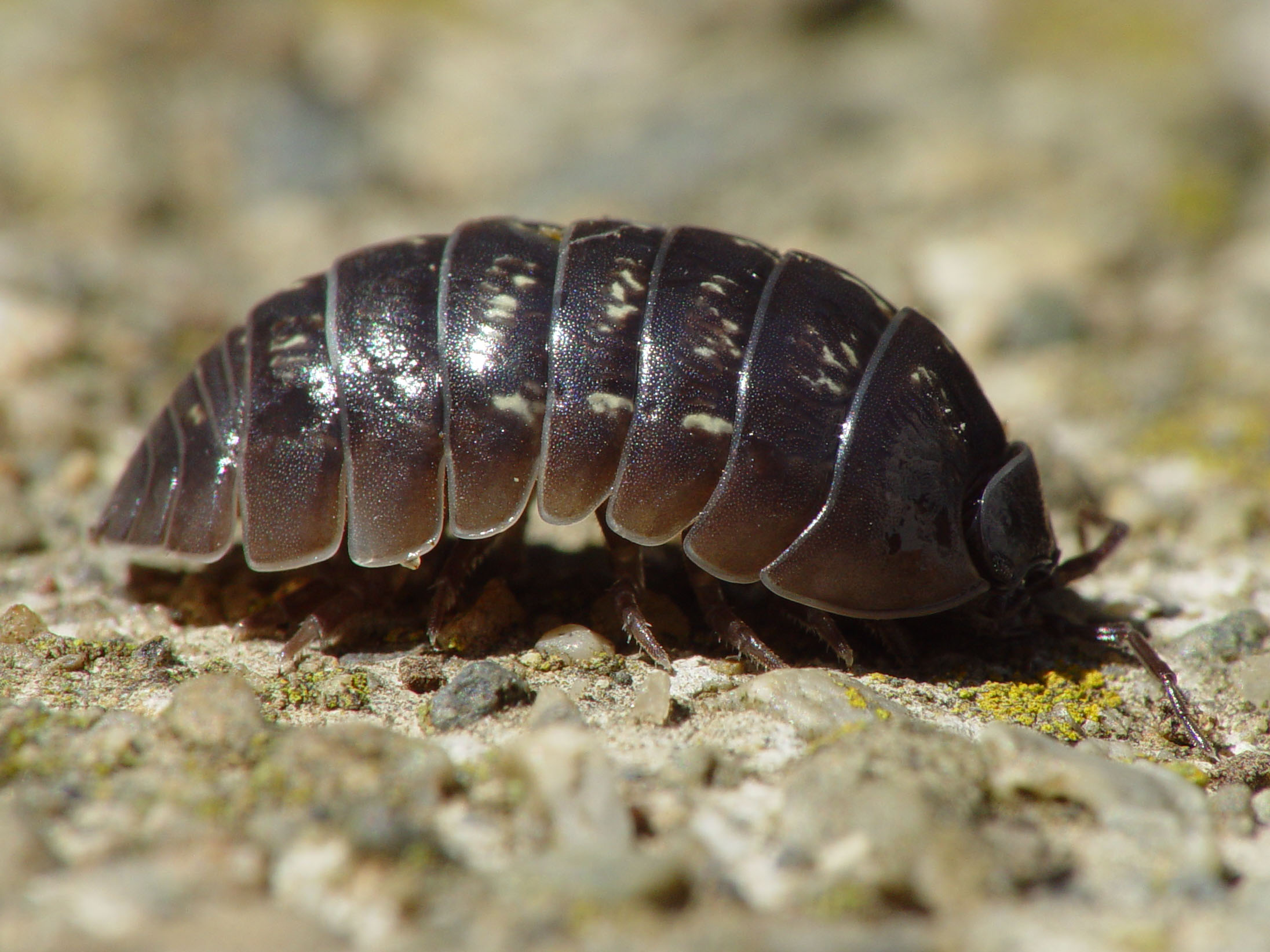On the morning of May 14, the editor for the Geography Department counted 46 pillbugs on the ground floor of the south wing of Ellison Hall—and that didn’t include the women’s restroom or the History of Art and Architecture’s Image Resource Center – and the bugs are swept up each night. This has been going on for several weeks. So, what’s a pillbug? And why are they invading?
According to Wikipedia, “Armadillidiidae is a family of woodlice, a terrestrial crustacean group in the order Isopoda. Unlike members of other woodlouse families, members of this family can roll into a ball, an ability they share with the outwardly similar but unrelated pill millipedes and other animals. It is this ability which gives woodlice in this family their common name of pill bugs, roly polies, chiggy-wigs or potato bugs. The best known species in the family is Armadillidium vulgare, the common pill bug. Among adults, they are often seen as unwanted (but essentially harmless) home pests. They are cherished among children, who enjoy keeping them as pets. Keeping a pet pill bug requires a very moist habitat with limited light. They can live for about two to three years.”
“A very moist habitat with limited light?” Granted, Geography personnel try to minimize overhead lighting to save energy, but the south wing of Ellison gets more sun than the north wing, and the north wing doesn’t have a problem.
“Pillbugs breathe by means of gills and specialized air tubes enclosed in protective chambers under the body. Gills must be kept wet in order to extract oxygen from water, restricting these creatures to moist habitats” (source). But Ellison Hall isn’t what you’d call “a moist habitat,” especially in light of the water saving measures that have been implemented inside the building and in the surrounding grounds during the last couple of years.
Pillbugs don’t cause any major damage, apart from being a minor nuisance: “They are not dangerous or harmful to people, pets, stored foods, houseplants, furniture, or home structural timbers. Unless they can find damp areas, none can survive inside the home for more than a few days. And even in high moisture areas, unless they also find food in the form of plant debris, they cannot establish permanent, reproducing populations in the dry, light living quarters of homes” (op. cit.).
Indeed, pillbugs are remarkably clean critters, insofar as they don’t urinate (they pass ammonia gas directly through their exoskeletons), and they eat their own poop (it’s called coprophagy – they need the copper that they lose through excretion). See insects.about.com for more interesting facts about pillbugs.
Phelps and Buchanan halls don’t have an infestation of pillbugs, so what attracts them to Ellison Hall? One initial theory was that they were attracted by the two, small compost bins outside the main double door, but few, if any, pillbugs have been seen around the bins. Another theory was that our tree trunk section illustrating dendrochronology (in the lobby) was to blame, but, again, few, if any pillbugs have been seen near it – besides, the round of pinewood was cut green in 2010, has been stripped of bark, and can hardly quality as “plant debris.”
Perhaps there’s a water-filled sinkhole under Ellison that attracts the critters. Perhaps it’s something even more sinister…(wacka-do, wacka-do):
THE EGGPLANT THAT ATE CHICAGO
(Dr. West’s Medicine Show & Junk Band; audio here)
You’d better watch out for the eggplant that ate Chicago, / For he may eat your city soon. / You’d better watch out for the eggplant that ate Chicago, / If he’s still hungry, the whole country’s doomed.
He came from outer space, lookin’ for somethin’ to eat. / He landed in Chicago. He thought Chicago was a treat. / (It was sweet, it was just like sugar)
You’d better watch out for the eggplant that ate Chicago, / For he may eat your city soon (wacka-do, wacka-do, wacka-do) / You’d better watch out for the eggplant that ate Chicago, / If he’s still hungry, the whole country’s doomed.
Article by Bill Norrington






